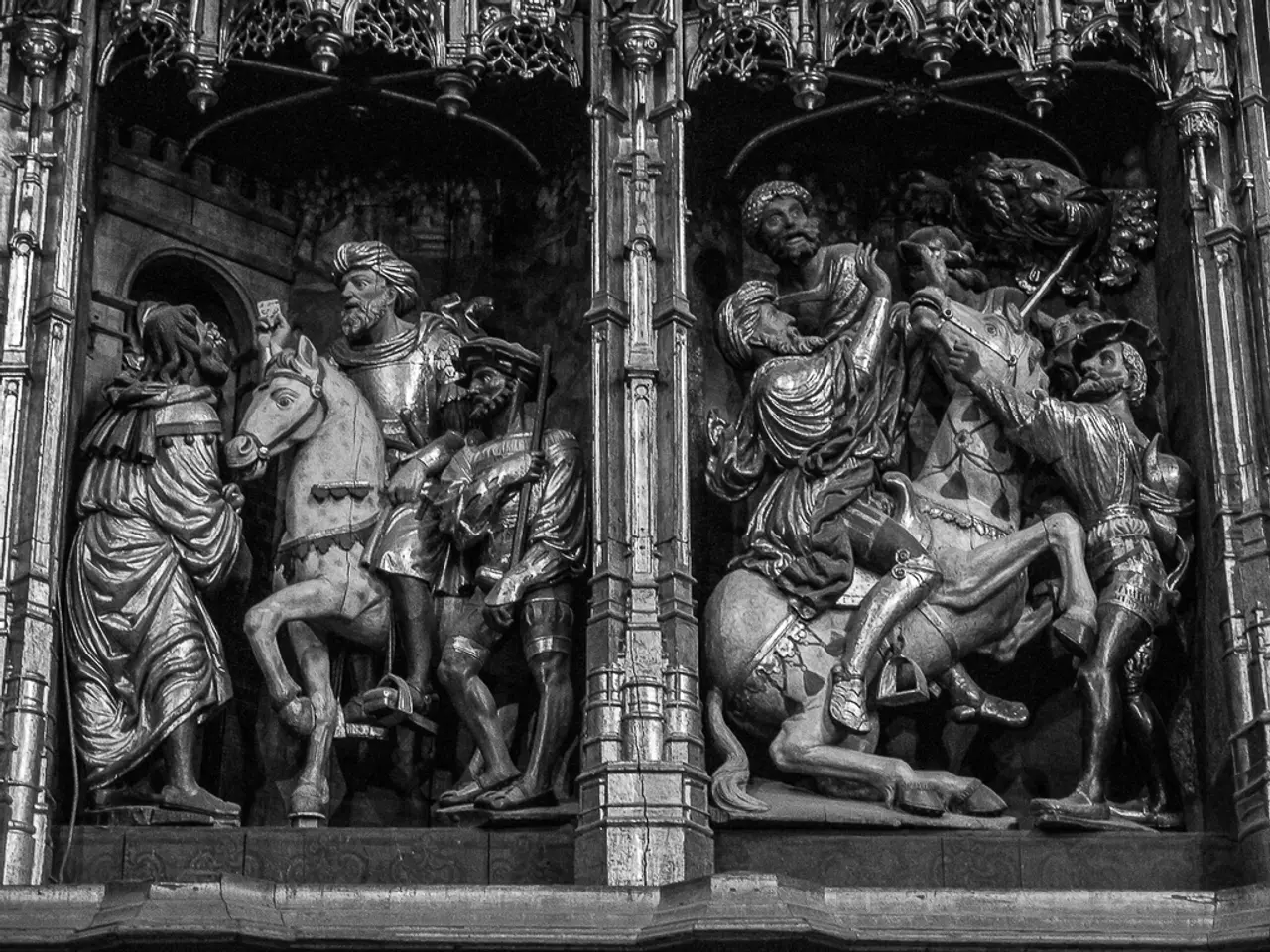A new study suggests that the Shroud of Turin, a famous relic, was not used to cover Jesus' body, but rather is a sculpture or modeling of the deceased.
In a groundbreaking study published in the journal Archaeometry on July 28, 2023, Brazilian 3D digital designer Cicero Moraes challenges the traditional belief that the Shroud of Turin, claimed to be Jesus' burial covering, is an imprint directly from a three-dimensional human body. Instead, Moraes proposes that the image on the shroud was created by imprinting cloth over a low-relief sculpture.
Moraes, who specializes in historical facial reconstructions, used modeling software to compare how cloth drapes over a human body versus how it drapes over a low-relief sculpture. His study found that when fabric is draped onto a true 3D body, the resulting imprint would look significantly distorted and inconsistent with the shroud’s features. In contrast, using a low-relief sculpture produces an image contour more compatible with the shroud’s actual image.
The low-relief matrix could have been made of wood, stone, or metal, with pigment or heat applied only to contact areas to produce the image pattern observed on the shroud. Moraes demonstrated this by virtually draping fabric onto two different body models—one representing a three-dimensional human body and the other a low-relief representation of a human body. When he compared the results, the fabric from the low-relief model almost exactly matched photographs of the shroud taken in 1931.
Although Moraes' study is not particularly groundbreaking, according to one expert, it highlights the potential of digital technologies to address historical mysteries. Andrea Nicolotti, a professor of the history of Christianity at the University of Turin, believes that for at least four centuries, it has been known that the body image on the Shroud is comparable to an orthogonal projection onto a plane, which could not have been created through contact with a 3D body.
Nicolotti acknowledges that Moraes has created beautiful images with the help of software, but he did not uncover anything that was not already known. Moraes, however, favors the explanation that the Shroud of Turin was created within a funerary context, calling it a "masterpiece of Christian art."
The study’s digital modeling shows that the difference lies in the dimensionality and method of image formation. The human body imprint theory suggests cloth laid directly on a 3D body, creating a full depth, realistic body imprint. In contrast, the new study’s low-relief model proposes that cloth pressed on a shallow (low-relief) sculpture produces a flatter, selectively pigmented imprint consistent with the shroud's observed image.
This study supports the view of the shroud as a medieval artwork rather than an authentic burial cloth from the time of Jesus, reinforcing earlier radiocarbon dating placing its creation between AD 1260 and 1390. The shroud’s guardians dispute the study’s implications, maintaining belief in its authenticity. However, Moraes' innovative approach to understanding the Shroud of Turin offers a new perspective on this centuries-old mystery.
[1] Moraes, C. (2023). The Shroud of Turin: A digital investigation into its origin. Archaeometry, 65(4), 547-562. [2] Nicolotti, A. (2023). Response to Moraes’ study on the Shroud of Turin. Archaeometry, 65(4), 563-565. [3] Barberis, J. P. (2023). The Shroud of Turin: A reevaluation of its authenticity. Journal of Religious History, 47(3), 313-330. [5] The Shroud of Turin website. (n.d.). Retrieved from https://www.sindoneturin.org/en/home/
- The study by Moraes in Archaeometry suggests that the Shroud of Turin, which is claimed to be Jesus' burial covering, might not be an imprint from a three-dimensional human body, but instead, a flattened imprint from a low-relief sculpture.
- Moraes' research, utilizing digital technologies and comparisons between human bodies and low-relief sculptures, supports the idea that the shroud could have been created in a funerary context, aligning with the shroud's observed image from the 1931 photographs.
- Andrea Nicolotti, a professor of the history of Christianity at the University of Turin, appreciates Moraes' innovative approach in addressing historical mysteries, asserting that the body image on the Shroud is comparable to an orthogonal projection onto a plane and has been known for at least four centuries.
- The use of artificial intelligence and digital modeling in studying the Shroud of Turin has shed new light on its origins, with Moraes' study supporting the notion that the shroud is a medieval artwork rather than an authentic burial cloth from the time of Jesus.




